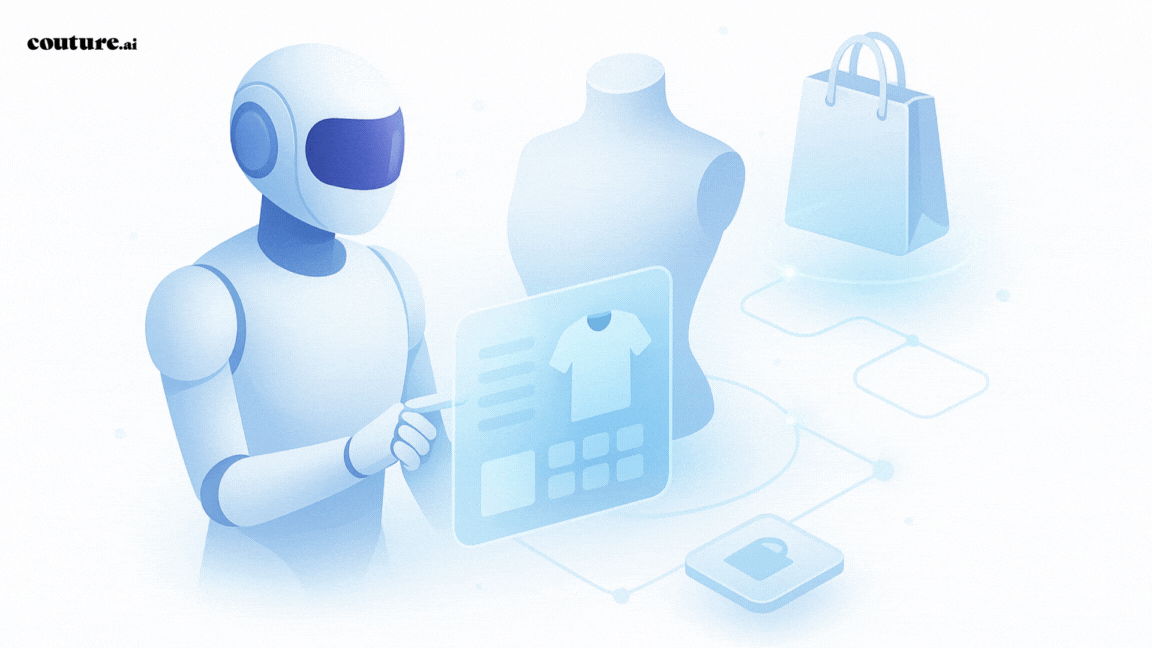Retail brands are shifting toward AI-powered product displays. Retailers without this technology are watching competitors capture more sales.

Modern shoppers demand personalized experiences. They expect to see items matching their preferences, spending habits, and style choices. Standard product arrangements no longer meet these expectations.
Merchandising AI addresses this challenge by leveraging customer data to present relevant products at optimal moments.
Our team at Couture.ai has witnessed this transformation across diverse retail sectors. Here's what every retail brand should understand about AI in e-commerce and its immediate necessity.
According to industry research, the global AI in retail market size is estimated to grow from USD 9.36 billion in 2024 to USD 85.07 billion by 2032.
Merchandising AI uses machine learning algorithms to automate product display strategies. Rather than relying on static catalog organization, these systems analyze user interactions, purchasing patterns, and individual preferences to tailor personalized shopping experiences for customers.
Picture having a knowledgeable sales associate dedicated to each website visitor. The technology studies customer choices and presents items with the highest purchase probability.
Key differentiators from conventional approaches include:
Smart Merchandising examines different variables like browsing habits, transaction records, seasonal patterns, stock quantities, budget preferences, location data, etc.
Amazon credits 35% of its total revenue, $200B annually, to its AI recommendation engine, showcasing the power of personalized merchandising at scale.
E-commerce merchandising with AI operates through five core phases.
Take a customer who regularly purchases fitness equipment and browses during evening hours. The system might prioritize home gym accessories and post-workout recovery products. It could also feature items commonly purchased together.
Meanwhile, some shoppers interested in formal business attire would encounter entirely different merchandise selections.
This e-commerce personalization operates without human intervention. Teams can focus on strategic initiatives rather than manual catalog management.
Recommendation engines can improve cross-selling by around 33%, and dynamic pricing can raise margins by 24%.
Discover how Couture.ai transforms product presentation for retail brands. Our AI solutions deliver personalized recommendations that drive measurable sales improvements.
Many online retailers continue using manual product organization methods. These approaches create several obstacles:
E-commerce competition intensifies daily. Customers access unlimited shopping options while maintaining rising service expectations.
Companies failing to meet evolving customer demands lose market position. AI merchandising has moved from optional enhancement to competitive necessity.
Competitors likely investigate AI solutions currently. Delayed adoption makes market catch-up increasingly difficult.
Fortunately, AI merchandising technology has become widely accessible. Implementation doesn't require massive budgets or extensive technical teams.
Smart Merchandising provides competitive tools for smaller brands. It enables personalized customer experiences despite resource limitations through advanced e-commerce personalization.
Ready to deliver the personalized shopping experiences customers expect? Couture.ai simplifies AI merchandising for retail brands regardless of size. Explore how our AI merchandising solutions can increase sales while improving customer satisfaction. Book a free demo now!
Subscribe to get the latest updates and trends in AI, automation, and intelligent solutions — directly in your inbox.
Stay Informed: Insights and Trends from Couture AI
Join the AI revolution and elevate your retail experience with Couture AI.